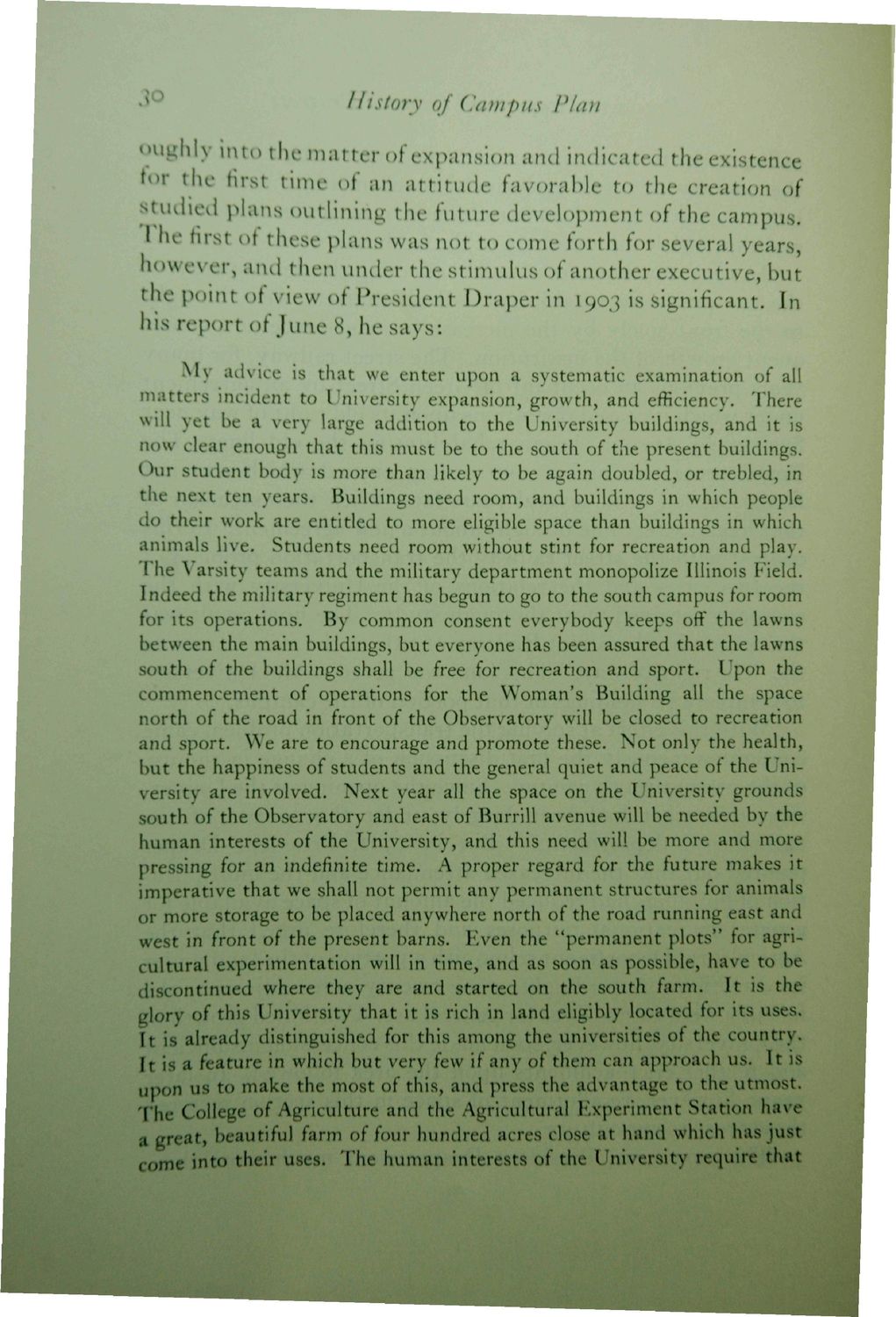| |
| |
Caption: Book - 30 Year Master Plan (Tilton & O'Donnell)
This is a reduced-resolution page image for fast online browsing.

EXTRACTED TEXT FROM PAGE:
^ History of Campus Plan oughly into the matter of expansion and indicated the existence tor the first time of an attitude favorable to the creation of studied plans outlining the future development of the campus. he first of these plans was not to come forth for several years however, and then under the stimulus of another executive, but the point of view of President Draper in 1903 is significant. In his report of June 8, he says: My advice is that we enter upon a systematic examination of all matters incident to University expansion, growth, and efficiency. There will yet be a very large addition to the University buildings, and it is now clear enough that this must be to the south of the present buildings. Our student body is more than likely to be again doubled, or trebled, in the next ten years* Buildings need room, and buildings in which people do their work are entitled to more eligible space than buildings in which animals live. Students need room without stint for recreation and play. The Varsity teams and the military department monopolize Illinois Field. Indeed the military regiment has begun to go to the south campus for room for its operations. By common consent everybody keeps off the lawns between the main buildings, but everyone has been assured that the lawns south of the buildings shall be free for recreation and sport. Upon the commencement of operations for the Woman's Building all the space north of the road in front of the Observatory will be closed to recreation and sport. We are to encourage and promote these. Not only the health, but the happiness of students and the general quiet and peace of the University are involved. Next year all the space on the University grounds south of the Observatory and east of Burrill avenue will be needed by the human interests of the University, and this need will be more and more pressing for an indefinite time. A proper regard for the future makes it imperative that we shall not permit any permanent structures for animals or more storage to be placed anywhere north of the road running east and west in front of the present barns. Even the "permanent plots" for agricultural experimentation will in time, and as soon as possible, have to be discontinued where they are and started on the south farm. It is the glory of this University that it is rich in land eligibly located for its uses. I t is already distinguished for this among the universities of the country. It is a feature in which but very few if any of them can approach us. It is upon us to make the most of this, and press the advantage to the utmost. The College of Agriculture and the Agricultural Experiment Station have a great, beautiful farm of four hundred acres close at hand which has just come into their uses. The human interests of the University require that
| |